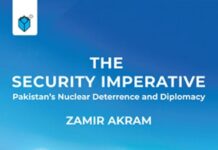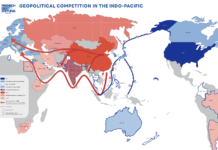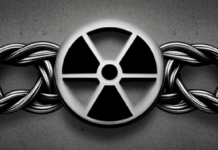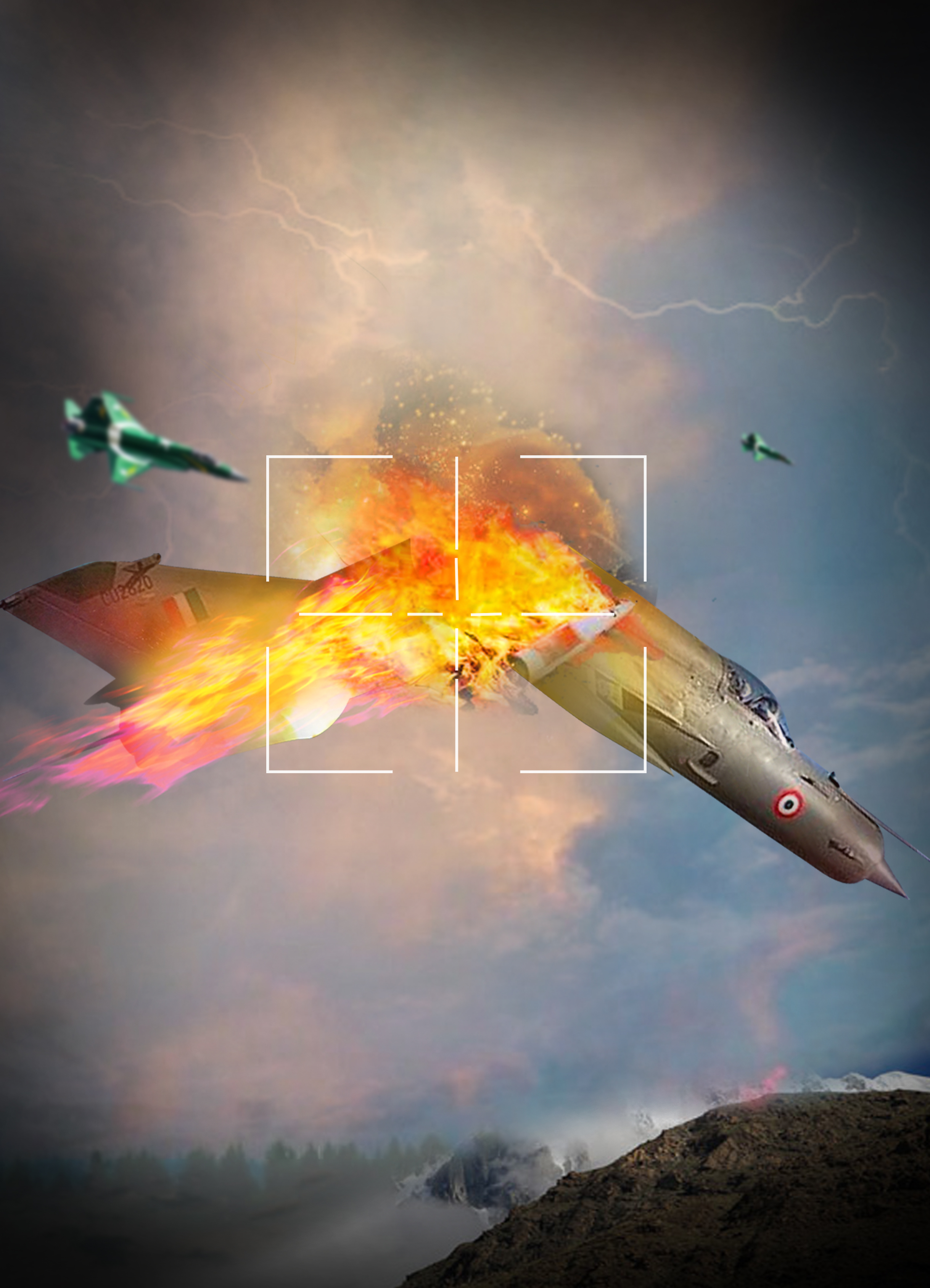Adil Sultan
Pulwama crisis was the most serious military engagement between India and Pakistan since the Kargil conflict of 1999. Despite its relatively short lifecycle, there was a real danger of miscalculation that could have led to inadvertent escalation with the possibility of a major war between the two nuclear-armed adversaries. The crisis has not yet completely subsided but has already challenged several prevailing assumptions that are likely to set the direction of future discourse on South Asia.
Besides the military ramifications, the outcome of Pulwama crisis is likely to have significant political and diplomatic implications for the future of South Asian strategic stability. It is, therefore, necessary to analyze the events that led to the start of crisis, its political and military significance, and see how close were these two countries to a war. In addition, was there any nuclear signaling done by both states? What are the implications of the crisis for the future? what are the prospects of the resumption of a dialogue between India and Pakistan? And, more importantly, what was the role of the third party in diffusing the current crisis?
The Making of the Crisis
On Feb 14, 2019, a 19 year old, young Kashmiri resident of Indian Occupied Kashmir (IoK) blew himself up killing more than 40 personnel of India’s Central Reserve Police Force (CRPF). Within hours, India blamed militant group Jaish-e-Muhammad and accused Pakistan of cross-border terrorism. Speaking at an election rally, PM Modi vowed revenge and declared that he has given a ‘free hand’ to his military to strike at the time and place of its own choosing.
Pakistan denied its involvement and offered full cooperation to investigate the incident and to bring to justice the perpetrators of the suicide attack. PM Imran Khan in his televised speech to the nation stated that Pakistan has no interest in engaging in a military conflict, but if India chose a military path, Pakistan will not think but will definitely retaliate. Cautioning India of the unintended consequences, Mr. Khan also said that it would be easy to start a conflict but difficult to control.
Emboldened by the support it received from the U.S. and some other western countries, India embarked on a diplomatic offensive to ‘isolate’ Pakistan. Starting with symbolic steps of withdrawing the status of a Most Favoured Nation (MFN) from Pakistan, hiking customs duty for Pakistani goods, engaging in a ‘tomato war’ by halting the export of tomatoes to Pakistan, additionally announcing that it will stop its share of water flowing into Pakistan.
On the domestic front, Indian security forces launched a widespread crackdown against the Kashmiris living in the IoK, while the RSS vigilantes harassed Kashmiri traders and students in rest of the country with complete impunity forcing them to flee from their homes and shift to other places. The ‘military-intellectual complex’ (MIC) comprising ‘armchair generals’ coupled with the growing ‘militant nationalism’ pushed India towards war with Pakistan. The Indian Prime Minister, Modi, who had earlier exploited and thrived on anti-Pakistan sentiments for his short-term political gains, had limited options to deal with the situation and he ended up choosing the military option.
On February 26, India announced that it had carried out a ‘non-military’ surgical strike against ‘terrorist camps’ in Balakot, inside the Western province of Khyber Pakhtunkhwa (KPK) with twelve Mirage-2000 aircraft equipped with Israeli Spice-2000 wepons. Initially, the strike was declared a success with a claim that several multi-storey buildings were destroyed and more than 350 terrorists were killed. Once it became clear through some independent observers via satellite imageries that there was no such damage on the ground as claimed, India shifted its story to say that the primary objective of the strikes was to demonstrate its resolve and deter similar attacks in the future.
Pakistan viewed the aerial violation of its territory as a serious challenge to its sovereignty and a threat to its security. As promised by Pakistan’s Prime Minister, Imran Khan in his earlier speech, Pakistan Air Force (PAF) was ordered to retaliate with a ‘tit-for-tat’ response on February 27, 2019. Several military installations were targeted across the LoC but purposely held back from precision strikes to avoid further escalation. In a short aerial engagement that ensued over Pakistan administered Kashmir, PAF was able to destroy at least two Mig-21s of the Indian Air Force. One of the Indian pilots ejected on the Pakistani side of the border and was captured, but subsequently returned unconditionally as a goodwill gesture to avoid further escalation.
The Political and Military Significance of the Crisis
The outcome of the crisis significantly impacted the political standing of the two leaders in India and Pakistan. PM Modi, who had initially hoped to capitalize on the incident for his electoral gains and to build his image as India’s ‘Iron man,’ found himself struggling to deal with the unexpected outcome. Not only did his military fail to achieve the initial desired objectives, but its dubious claims and shifting narratives about the purpose of the ‘failed’ strikes significantly damaged Modi’s domestic and international standing.
PM Imran Khan, on the other hand, emerged as a credible leader, both domestically as well as at the international level. In his three short speeches during the crisis, Khan did not indulge in nuclear blackmail yet he continued to reiterate the offer of dialogue on all outstanding issues, including the issue of Kashmir. Moreover, by following through his promise of assured retaliation, Khan was able to strengthen his own credibility at home as a strong nationalist leader, and established himself as a seasoned statesman who was willing to make the right decisions under immense pressure.
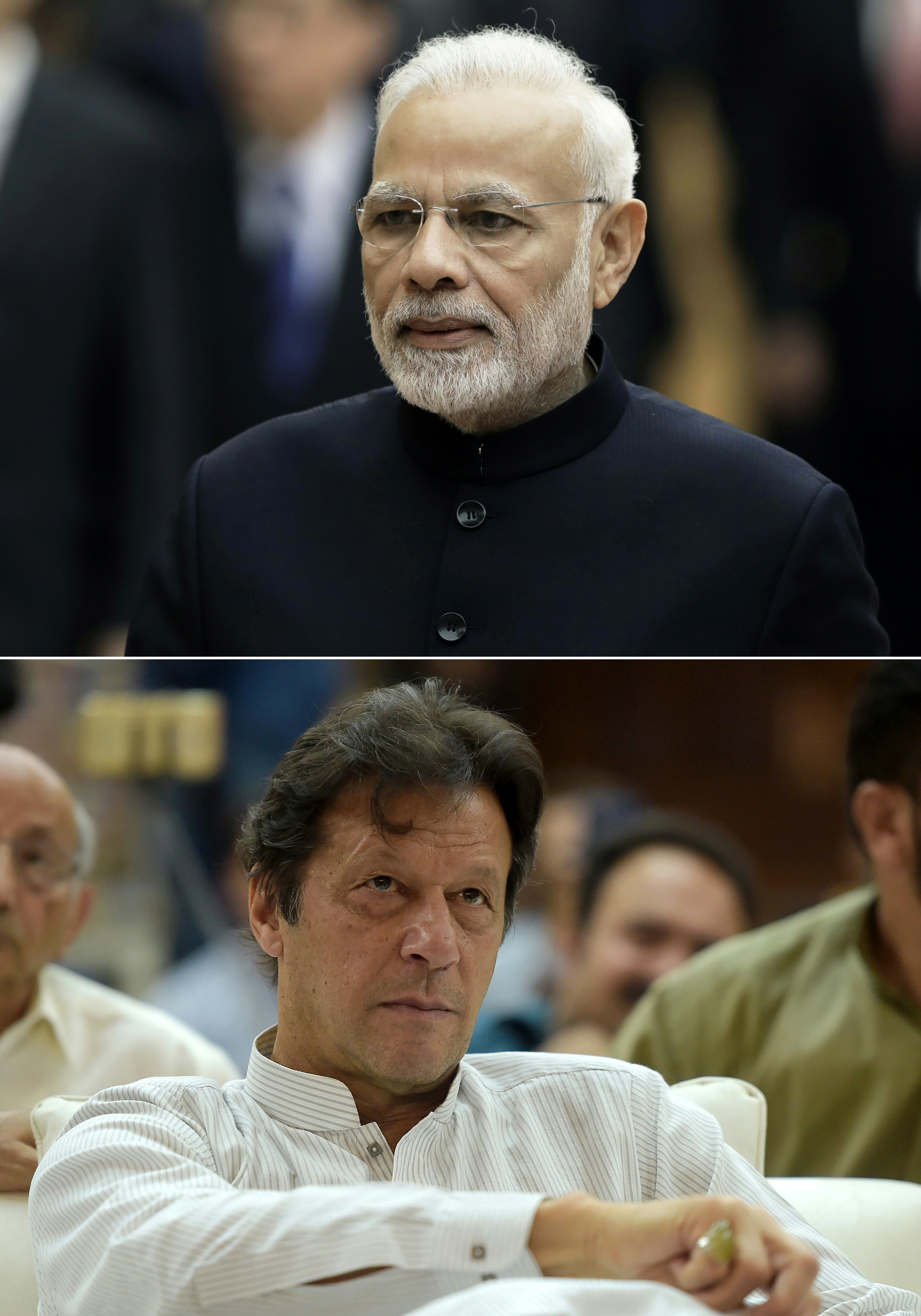
The outcome of the crisis also severely damaged India’s military image as an emerging power in the Indo-Pacific region. With an annual budget of over $60 billion – six times more than Pakistan’s defense spending of $ 9 billion – India demonstrated that it is not yet ready for regional leadership role to confront China, otherwise projected as India’s principal adversary while Pakistan only as an irritant.
India’s failed surgical strike that resulted in Pakistan shooting down two Indian aircraft, in addition to the interdiction of the Indian submarine near Pakistan’s territorial waters, exposed Indian military’s vulnerabilities. PM Modi’s statement on India’s need for Rafale jets to punish Pakistan (hinting at a different outcome of the crisis) was a snub for the opposition parties who had been questioning the controversial Rafale deal. It was also an endorsement of the concerns highlighted by the Indian Air Force Chief a few weeks before the recent crisis erupted on Indian warfighting capabilities and vulnerabilities therein requiring modernization of the IAF.
The Pulwama crisis also brings to fore concerns about India’s doctrinal evolution. Since 2008 Mumbai crisis, the dominant narrative about a future crisis triggered by non-state actors suggested that India would operationalize its Cold Start Doctrine (CSD), existence of which was formally acknowledged by the current Indian Army Chief in January 2017. India has been annually practicing this limited warfighting doctrine under a nuclear environment since its inception in 2004. It has spent significant resources and invested in infrastructural development by building new cantonments along its international border with Pakistan to reduce the time for mobilization of its troops. One would think that the current crisis would be exactly the scenario in which the Indian CSD would be operationalised. But it was not. India was deterred. Pakistan’s Full Spectrum Deterrence (FSD) was in play precluding any possibility of escalation by India throughout the entire spectrum of the crisis.
Was War between India and Pakistan Imminent?
Employment of airpower by India inside Pakistani territory was a dangerous escalatory move and technically an act of war. If Pakistan had not demonstrated restraint, and instead of a proportionate response, opted to target India’s military installations, it would have surely led to the possibility of an outbreak of war between the two nuclear-armed adversaries. Likewise, a) the decision of not targeting India’s submarine once it was detected closer to the Pakistani territorial waters and b) the voluntary early release of the captured Indian pilot reduced the incentive and space for India to justify further escalation. The two countries were close to war, but particularly the actions from the Pakistani side and intervention by several third parties helped de-escalate the crisis early on.
Was there any Nuclear Signaling?
Post-Mumbai 2008, there had been a widespread belief that in a future crisis between the two South Asian adversaries, Pakistan, due to its conventional disadvantage via-a-vis India, would have no option but to resort to the threat of use of nuclear weapons to deter Indian conventional strikes. This assumption became a template for several South Asian observers with some accusing Pakistan of indulging in ‘nuclear blackmail.’ These assumptions, for now, have been proven wrong.
Pakistan did not indulge in nuclear signaling and opted to respond through a reciprocal surgical strike. The only reference to nuclear weapons was a caution by PM Khan in his three short speeches, in which he briefly alluded to the dangers of escalation between the two nuclear powers, and hence the need for restraint from both the sides, yet without uttering the N word. The National Command Authority (NCA) met to review the evolving security situation, but unlike the past practice did not issue a press release to avoid miscommunication.
Since Pakistan was able to achieve its political and military objectives at the start of the crisis, it , therefore, had no additional incentive to indulge in nuclear signaling. If there was any nuclear signaling, it was from the Indian side and not Pakistan. According to some reports, India had deployed its entire naval fleet to the Arabian sea at the start of the crisis which included the newly commissioned ‘Arihant’ submarine capable of carrying nuclear-capable ballistic missiles with a range of 750 km. These missiles may not be adequate to threaten Pakistan’s major cities, but its employment as part of nuclear signaling is likely to set a dangerous precedent for the future.
More recent reports appearing mostly in the Indian media suggest that India had deployed its missiles close to the international border and was planning to launch strikes against six Pakistani targets. In response, Pakistan conveyed that it would retaliate with its own missile strikes three times to those done by India. Apparently based on the information shared by a member of India’s Cabinet Committee on Security (CCS), “India was prepared to go down the missile road” if any harm came to the pilot who was in Pakistan’s custody. Although it is difficult to corroborate the authenticity of these claims in these reports, the situation as it evolved, does not bode well for the overall strategic stability in the region.
Indian and Pakistani missiles can carry both nuclear and conventional payloads. Any use of missile in a crisis therefore can be misperceived by the other as a pre-emptive counterforce strike forcing a response in kind or risk losing everything. Several senior Indian decision-makers have in the recent past alluded to such a possibility where India might opt for a ‘first strike’ against Pakistan to neutralize or degrade Pakistan’s capacity to retaliate. Given the level of mistrust between the two countries, misjudging each other’s intentions during a crisis is more than likely a possibility.
Indian claims of missile deployment against Pakistan can also be seen as an attempt to salvage India’s image as a credible nuclear power that is willing to take risks, especially once it had received an unexpected blow from its relatively smaller neighbor. This nevertheless can also provide incentives for others to deploy missiles very early on in a future crisis in order to avoid a decapitating first strike irrespective of whether it is intended or not.
Implications of the Crisis on Resumption of Dialogue
The Pulwama crisis was an outcome of rising militant nationalism in India, which seems to have further thrived on anti-Pakistan sentiments and is being exploited by India’s political leadership for their domestic politics. This very dynamic may have already reduced the space for any future official Indian engagement with Pakistan. However, looking at their past history, possibility of a dialogue cannot be completely ruled out especially when both countries are struggling to emerge out of this crisis.
After the 1998 nuclear tests, both India and Pakistan agreed to engage in a dialogue process and signed the Lahore MoU in 1999. The events of Kargil and the 2001-02 military standoff impeded further progress, but after realizing that there is no military solution to resolve their political differences, both countries once again agreed to start a Composite Dialogue process in 2004. The CD was abandoned after the Mumbai crisis in 2008. There is a likelihood that India may consider re-engaging Pakistan, but much would depend on the outcome of the upcoming Indian elections. If Modi is re-elected with majority, he will be secure enough to re-start the dialogue with Pakistan on his own terms. A weak coalition government under BJP or Congress, might not be able to do so without risking their respective positions.
Third Party Mediation in the Balakot Crisis
In the past, extra-regional powers, especially the United States, have played an important role in diffusing the crisis between India and Pakistan. There is a general perception that the U.S. may have also helped diffuse this current crisis through aggressive back channeling. While it might be true, other countries like Russia and China, also seem to have played a meaningful role in helping de-escalate the crisis between India and Pakistan. Some new third party players like the UAE and KSA also emerged on the scene to calm both sides down during the crisis.
According to Ashley Tellis, the U.S. was engaged in ‘recessed diplomacy’ which was intended to pressure Pakistan, while at the same time, providing latitude to India to undertake punitive measures against its adversary. The White House, in its statement within a few hours of the incident called on “Pakistan to end immediately the support and safe haven provided to all terrorist groups operating on its soil.” This was done without ascertaining the fact that the attack was carried out by a local Kashmiri from the Indian Occupied Kashmir (IoK). The U.S. National Security Advisor (NSA), John Bolton defended India’s right to self-defense, thus implicitly giving the go-ahead for military action against Pakistan. President Trump also echoed India’s tough signaling by warning that “India is looking at something very strong,” in another way, endorsing India’s military action against Pakistan.
Due to this obvious bias, the U.S. was in no position to influence Pakistan’s choices. The story ‘of lies and deceit’ that incorrectly emphasizes the U.S. role could possibly be aimed at shaping the post-Pulwama narrative and divert attention from India’s own military, diplomatic and political failure. By putting the onus of responsibility for India’s inaction on a third party, which in this case was the United States, the Indian leadership hoped that it could cover up its own blunder.
The U.S. that has traditionally been brokering peace in the region seems to have lost its clout by overtly siding with India. Other players, most notably Russia and China have emerged as unbiased, important and credible stakeholders to ensure peace in the region.
Post-Balakot: What Now?
Post-crisis Indian commentaries give an impression that ‘Balakot strikes’ were symbolic intended to send a message that in a future crisis, India would not hesitate to strike Pakistan’s mainland. If India intends making this as the ‘new normal,’ it may come out more bruised and embarrassed due to its exposed political and military vulnerabilities as this present crisis demonstrated.
The strategic discourse post-2008 Mumbai crisis was premised on the assumption that a future crisis would be triggered by a Pakistan-based non-state actor(s), forcing India to take punitive measures with Pakistan being at a conventionally disadvantageous position, having no other option but to resort to the threat of nuclear use. These hypotheses have been proven null. Pakistan did not indulge in nuclear signaling but was able to assert its FSD posture in addition to establishing the credibility of its conventional deterrence against an adversary which had relative military advantage over it.
The Pulwama-Balakot crisis has some useful lessons for the future. An obvious one is that there is no space for a limited or an all-out war between the two nuclear neighbors. If India attempts to launch a surgical strike (land or air), it would have to take into consideration the associated political, diplomatic and the military costs into its decision-making calculus like never before. The U.S. is no longer a reliable neutral broker in the region given its tilt towards India and their strategic partnerships. It is therefore essential that both India and Pakistan should evolve a mechanism to prevent such occurrences in the future. India remains generally opposed to third party mediation in its conflicts, especially major powers like the U.S., Russia, and China. India may, however, consider a relatively neutral player, or a group of countries acceptable to both, to mediate and help resolve its core disputes. Without any outside help, it is more likely that the two nuclear adversaries would continue to remain entangled in a cycle of crises that may eventually lead to war.
Dr. Adil Sultan is a Visiting Research Fellow at King’s College London.





